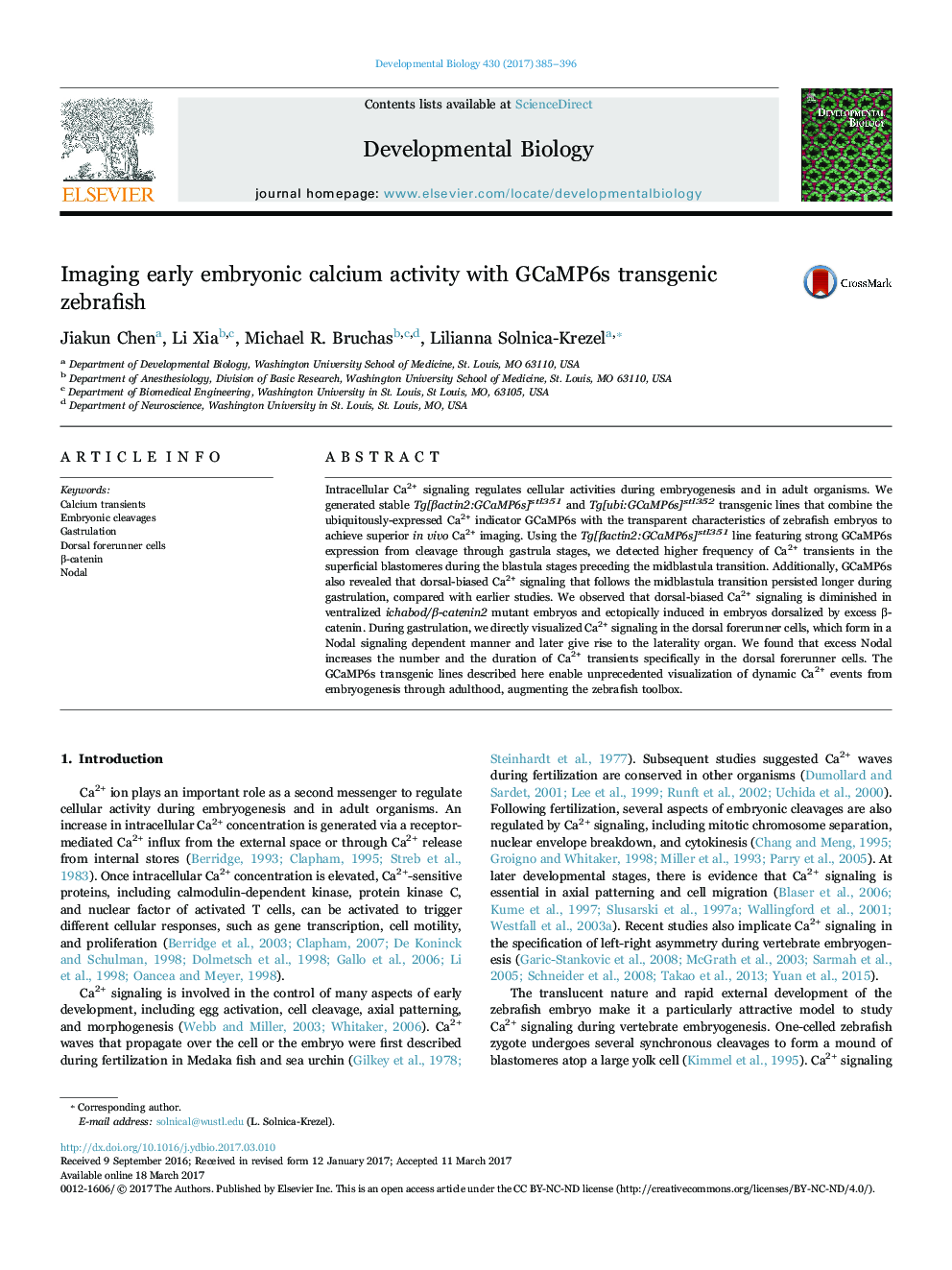| Article ID | Journal | Published Year | Pages | File Type |
|---|---|---|---|---|
| 5531635 | Developmental Biology | 2017 | 12 Pages |
â¢Ubiquitous GCaMP6s transgenic zebrafish for ultrasensitive in vivo Ca2+ imaging.â¢Ca2+ transients in superficial blastomeres persist from blastula to gastrula stages.â¢Dorsal-biased Ca2+ signaling is twice as long as previous reported.â¢Dorsal-biased Ca2+ signaling is diminished in ventralized and ectopically induced in dorsalized embryos.â¢Nodal signaling can specifically modulate Ca2+ activity in the dorsal forerunner cells.
Intracellular Ca2+ signaling regulates cellular activities during embryogenesis and in adult organisms. We generated stable Tg[βactin2:GCaMP6s]stl351 and Tg[ubi:GCaMP6s]stl352 transgenic lines that combine the ubiquitously-expressed Ca2+ indicator GCaMP6s with the transparent characteristics of zebrafish embryos to achieve superior in vivo Ca2+ imaging. Using the Tg[βactin2:GCaMP6s]stl351 line featuring strong GCaMP6s expression from cleavage through gastrula stages, we detected higher frequency of Ca2+ transients in the superficial blastomeres during the blastula stages preceding the midblastula transition. Additionally, GCaMP6s also revealed that dorsal-biased Ca2+ signaling that follows the midblastula transition persisted longer during gastrulation, compared with earlier studies. We observed that dorsal-biased Ca2+ signaling is diminished in ventralized ichabod/β-catenin2 mutant embryos and ectopically induced in embryos dorsalized by excess β-catenin. During gastrulation, we directly visualized Ca2+ signaling in the dorsal forerunner cells, which form in a Nodal signaling dependent manner and later give rise to the laterality organ. We found that excess Nodal increases the number and the duration of Ca2+ transients specifically in the dorsal forerunner cells. The GCaMP6s transgenic lines described here enable unprecedented visualization of dynamic Ca2+ events from embryogenesis through adulthood, augmenting the zebrafish toolbox.
